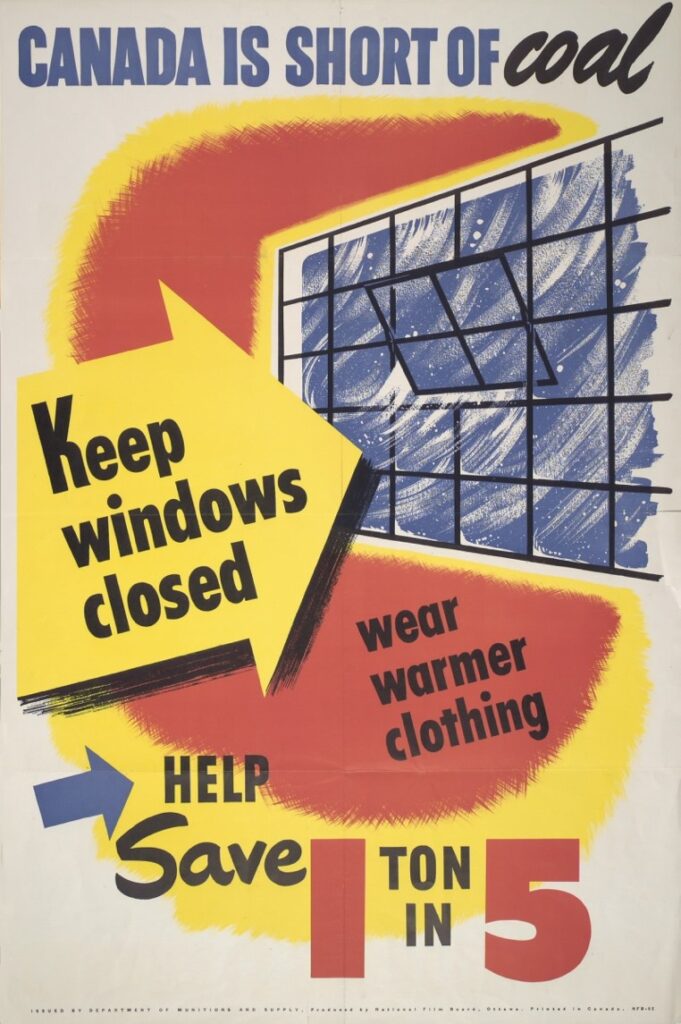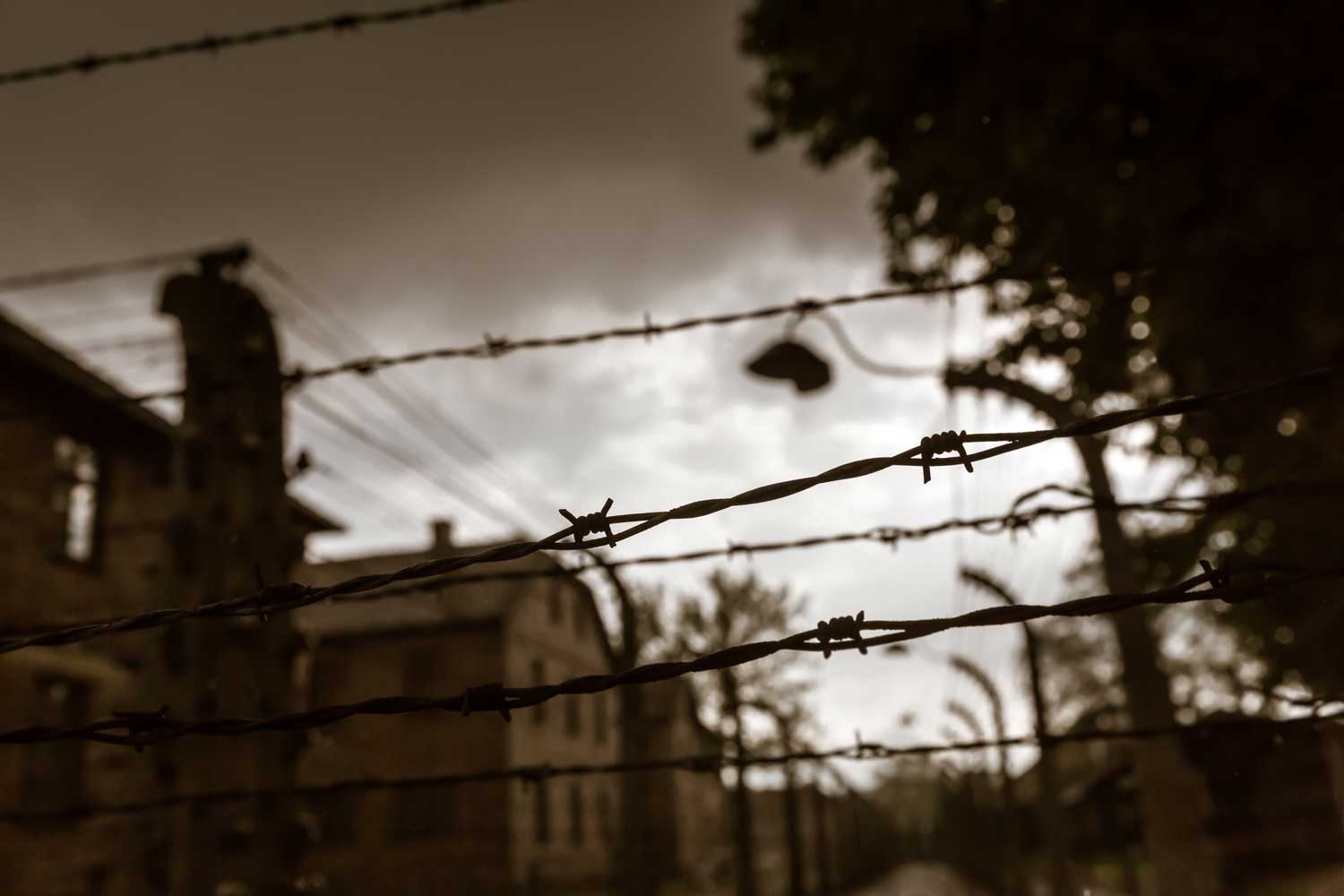“Every time you twist a nut, think of Hitler…”
- This poster from WWII uses transfer, ethos, and pathos. It shows the sentence “Every time you twist a nut, think of Hitler” coming from a captain. Generally, captains are trustworthy. When people board a ship, they have to trust the captain to lead a safe trip to the destination. In this case, a naval captain represents this statement as a credible source. This naval captain holds a wrench while twisting a nut with the face of Adolf Hitler, which may be a humorous way to catch attention, as the word “nut” is also emphasized. Since people contributed to producing essential war supplies, the people contributing to production would get the country closer to winning the war. This message encouraged workers in factories to produce more and work harder than anyone in Germany. It caused people to feel hatred, have the motivation to fight Hitler, and work harder to “defeat” Germany. I think this poster was effective because everyone wanted the war to end fast, and this propaganda targeted the ones who had not contributed much but hated Hitler to give them, especially those who were working in production, the motivation and inspiration to work even harder. This propaganda poster was more humorous than persuading to me. If I were an average worker helping in wartime supply production, I would probably already think about the urge to defeat Hitler and work harder to win against Germany. This poster is more of a reminder than a call to action, a reminder to work harder.
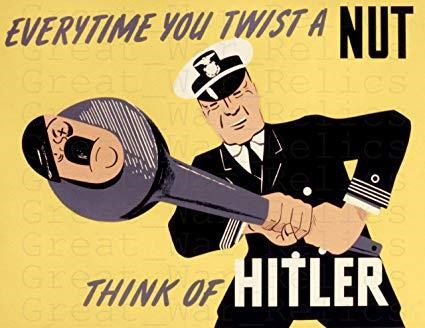
“Stop waiting, get ready to beat Hitler, go enlist now.”
- This poster from WWII uses ethos, pathos and logos. The statement “STOP WAITING, GET READY TO BEAT HITLER, GO ENLIST NOW” made people think that the government was commanding them, like it was something they had to do. The “STOP WAITING” part convinced people that they were actually waiting and were legitimately confused, and this poster urged them to stop “waiting.” Usually, when people are in traffic, the traffic lights direct and command them when to stop, get ready, and go. I think the stoplight image accompanied by the words “enlist now” would have persuaded people psychologically. With that said, the traffic light is the ethos here. Also, the image of the marching soldiers at the back would have made some people feel guilty or left out. “What am I doing here and not there?” they might have wondered. Some logos appears in this poster for perspective, and it seems to be an emotional way to encourage people to enlist. First, stop waiting, then get ready to beat Hitler at the war. The final step was to go enlist and contribute in combat. I think this propaganda was very effective, clean, and easy to understand. As well, it showed excellent art with a command that allowed people to feel and see the message well, get ready, and enlist as soon as possible. The visual perfectly fit the message by using a traffic light to command the audience cleanly and clearly. Most people might have enlisted due to the feeling of “missing out.”
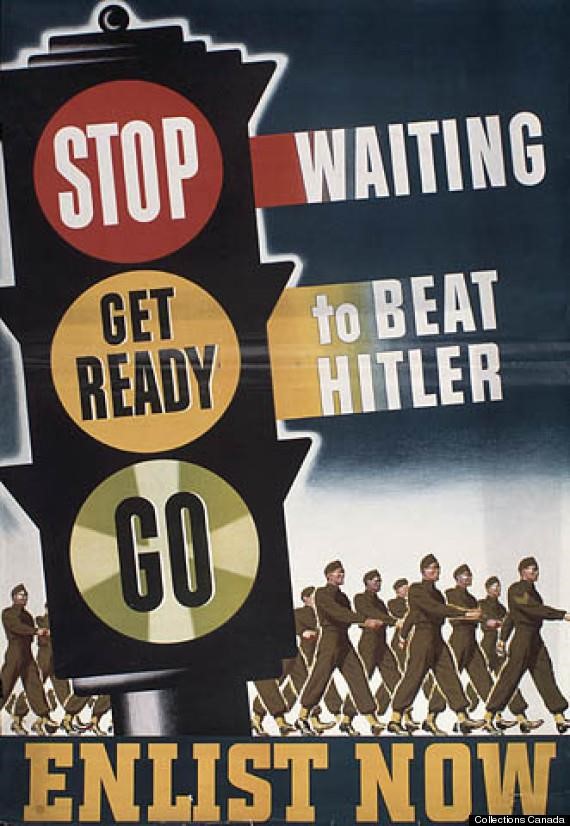
“I gave a man! Will you at least 10% of your pay in War Bonds?”
- This WWII poster uses ethos and pathos. The statement “I gave a man! Will you at least 10% of your pay in War Bonds?” comes from a mother of two happy children. Where is the father, though? “I gave a man” means that the lady “gave” her husband to the war and she says, “Will you give at least 10% of your pay in War Bonds?” to beg the audience to give something that is considered small in comparison to a human, who is someone’s husband and a father. This poster makes the audience feel sympathy, guilt, sadness, and inspiration to help. This poster would have been very effective for those who were very emotional and compassionate. The amount of sympathy one could have felt from this depends on the person, but this lady “gave” her husband, the father of her children. Giving away victory bonds seems less all of a sudden in comparison to what she gave. So, having seen this comparison, people would have definitely considered buying bonds because the amount asked did not feel expensive anymore. This poster triggered a lot of emotions. As an emotional person, I would have felt sympathetic and guilty toward my mother, thought about all the other women like this lady, and ended up giving victory bonds.
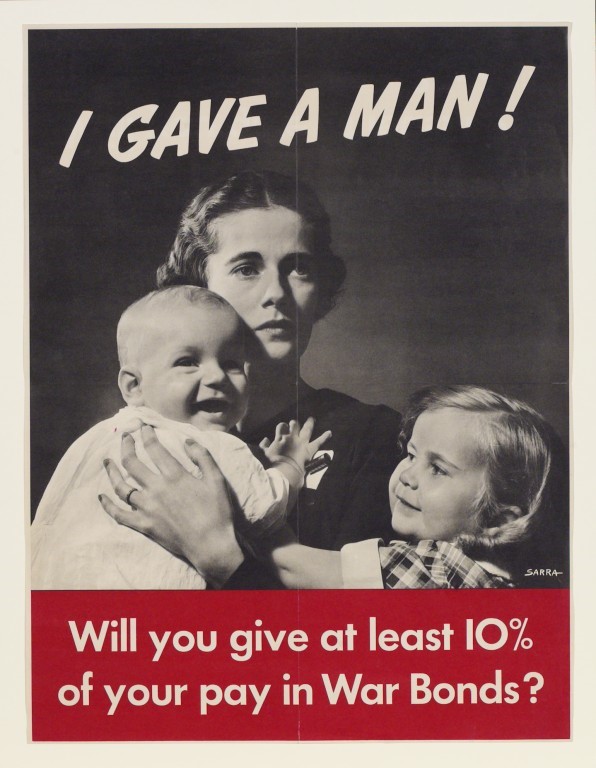
“Canada is short on coal, keep windows closed!”
- This WWII poster uses logos and pathos. This poster tries to tell people that their country is short on coal, and people should save coal by closing their windows instead. Coal was a significant resource throughout the early twentieth century and in high demand for Canada’s war efforts. This poster urged Canadians to reduce their consumption of energy. It is fascinating to think about how similar messages are being used today to counter global warming. It tells “factual and logical” information by saying each person can help save 1 in 5 by saving coal. Whether that number is accurate or not, people would consider this message because the “numbers” visually look credible.
